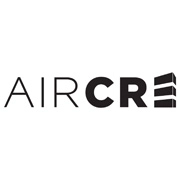
Setting competitive rental rates is crucial for landlords who want to attract tenants while maximizing their investment returns. In a competitive rental market, pricing your property correctly can mean the difference between a vacant unit and a fully occupied one. Whether you’re renting a single-family home, apartment, or commercial space, understanding how to set the right price is essential. Therefore, in this blog post, you’ll learn how to determine competitive rental rates. You’ll become aware of local market trends, property features, and tenant demand. Thanks to those, you’ll have everything you need to set competitive rental rates. By the end, you’ll have the tools you need to price your property effectively and stay ahead of the competition.
Understand Your Market and Tenants
First, it’s crucial to understand your target tenant. Are you thinking of catering to students, young people, professionals, or families? Knowing your ideal tenant helps you tailor your property and pricing strategy.
Next, dive deep into the local rental market. Research current rental rates, vacancy rates, and overall demand for different property types. Consider factors like nearby universities, employment opportunities, and public transportation. Also, think about the specific needs of your target tenant. For instance, if you’re renting to families, you might want to prioritize properties in safe neighborhoods with good schools.
Finally, you also shouldn’t forget the small things that can make a huge difference. For instance, you can improve the air quality for your tenants, add some interesting elements to the room, etc.
Assess Your Property’s Value
To set a competitive rental rate, you must also be aware of your property’s value. Therefore, when planning on looking for tenants, here are a few factors to consider:
- Property Condition: Is your property clean and well-maintained? Is there any need for renovations or upgrades?
- Size and Layout: How big is your property? Is the layout functional and appealing?
- Unique Selling Points: Does your property have any special features, like a private yard, a garage, or stunning views?
- Location, Location, Location: Is your property in a desirable neighborhood? Are there nearby amenities, like grocery stores, restaurants, and public transportation?
Calculate Operating Costs
If you want to set a competitive rental rate, you need to understand your operating costs. This includes property taxes, insurance, utilities, maintenance and repairs, mortgage payments, and vacancy costs. If you use a self-storage unit to store extra belongings, factor in the monthly fee. Also, know that when choosing a storage facility, there are plenty of security features to look for. In this case, you’ll need surveillance cameras, secure access gates, and climate-controlled units. By understanding your operating costs, you can set a rental rate that covers your expenses and generates a profit.
Set Your Rental Rate
Now, it’s time to set competitive rental rates and attract the right tenant. So, start this task by researching comparable properties in your area. Look at similar units in terms of size, condition, and location. You can use online rental listings or work with a local real estate agent to get a sense of market rates. Next, consider using online rental market analysis tools. These tools can help you estimate fair market rent based on property size, location, and amenities. Finally, don’t forget about seasonal fluctuations in rental demand. If you’re in a college town, you might want to charge higher rates during the academic year and lower rates during the summer.
Pricing Strategies for Maximum Occupancy
To maximize occupancy, you may want to consider some creative pricing strategies. One option is flexible lease terms, which usually means on of these options: a shorter lease or month-to-month rental. This can entice tenants who are looking for more flexibility. Another strategy is to provide rent incentives, like move-in specials or discounted rent for longer leases. You could also consider waiving certain fees, such as application or pet fees. If renting to co-living tenants, you could create shared spaces, like common rooms or kitchens. This can help you charge a premium for your units.
Additionally, you also shouldn’t forget about the importance of technology. Using property management software can help you streamline your operations and reduce costs. This can free up more time to focus on marketing your property and finding quality tenants.
To Set Competitive Rental Rates, You Should Market Your Rental Property
To lure potential tenants, this is also something you need to do. Therefore, make sure to check out a few tips that can help you make that happen:
- Create High-Quality Listings: Use high-quality photos and detailed descriptions to showcase your property’s best features.
- Utilize Online Listings: Post your rental on popular websites like Zillow, Apartments.com, and Craigslist.
- You can always plan to Leverage Social Media: Share your listing on social media platforms like Facebook, Instagram, and Twitter.
- Network with Local Real Estate Agents: Build relationships with local real estate agents to reach a wider audience.
- Offer Virtual Tours: Use virtual tour technology to give potential tenants a virtual tour of your property.
Screen Tenants Thoroughly
Before you rent your property, it’s important to screen your tenants thoroughly. This involves checking their credit history, rental history, and income. You can also conduct background checks to ensure your tenants are reliable and trustworthy. Once you’ve found a qualified renter, it’s important to communicate with your new tenants clearly and effectively. This includes providing them with a lease agreement that outlines the terms of the tenancy, as well as any rules and regulations that they need to follow.
By screening your tenants carefully and communicating effectively, you can minimize the risk of problems down the road.
In The End, What To Do?
In conclusion, if you want to set competitive rental rates, you need to attract quality tenants while ensuring a sustainable return on investment. By carefully researching the local market, factoring in property features, and staying mindful of demand fluctuations, you can establish rates that are both appealing to potential renters and profitable for you. Regularly reviewing your rates and adapting to market trends will keep your rental property competitive in a dynamic housing market. With these strategies, you’ll be in a strong position to maximize your property’s value and maintain long-term success as a landlord.








